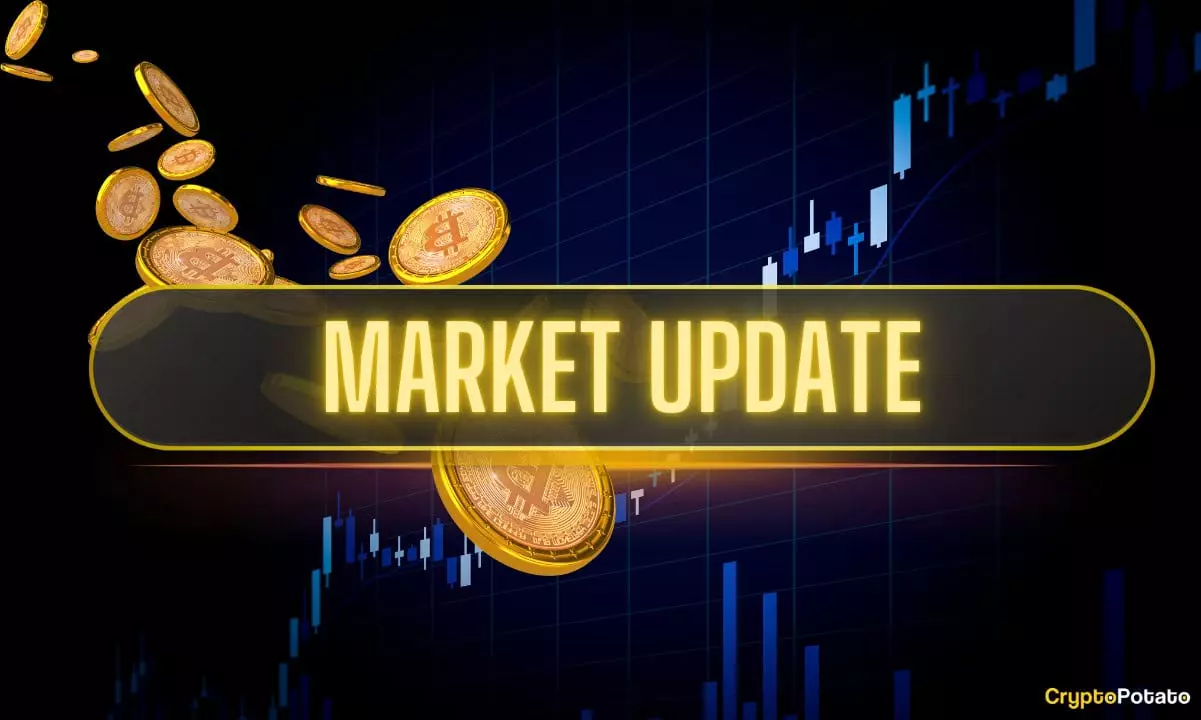The recent surge in the cryptocurrency market has sparked excitement among investors, but beneath the surface, this rally reveals profound vulnerabilities that are often dismissed amid the hype. While Bitcoin soared past $124,000, and Ethereum flirted with $4,700, these gains mask a precarious bubble fueled more by speculative fever than genuine value. The bullish trend appears intoxicating — yet this euphoria is likely to be a transient illusion, built on shaky foundations that threaten to unravel with the slightest correction.
Many investors cling to the idea that these new peaks signal a sustainable market expansion, but history suggests otherwise. Rapid price accelerations, topped with sharp corrections driven by macroeconomic shocks such as surging inflation data like the July PPI numbers, highlight an intrinsic volatility that cannot be dismissed. When times of economic uncertainty, particularly with geopolitical tensions in Ukraine and potential U.S.-Russia negotiations, come into play, the supposed robustness of these assets crumbles. In reality, the current rally may be less about growth and more about a desperate, last-ditch effort by traders trying to squeeze profits out of an overinflated bubble.
Market Cap and Dominance: Illusions of Stability
Another critical flaw is the misconception surrounding the market cap and Bitcoin’s dominance. While the total crypto market cap crossed the $4 trillion mark, this figure is inflated by speculative assets rather than genuine adoption. The gradual decline of Bitcoin’s market dominance — now below 58% — is often portrayed as a sign of a growing altcoin market, but it could instead be indicative of instability within Bitcoin’s core holder base. The over-reliance on a few dominant assets creates a fragile ecosystem where a correction can rapidly cascade through the entire market.
This erosion of dominance is a double-edged sword. It fuels claims that the crypto space is diversifying, but in reality, it exposes the sector’s dependence on unproven digital tokens that lack intrinsic value and solid use cases. When investors realize that even these altcoins may not be able to hold their own against Bitcoin’s volatility or macroeconomic shocks, the entire structure risks collapsing into a more profound retracement.
Misplaced Optimism and the Reality of Market Cycles
Within the feverish narrative of a new bull cycle, one must question whether recent highs truly represent a continuation of genuine growth or a temporary outburst. Metrics like Bitcoin’s NUPL (Net Unrealized Profit/Loss) are often cited to justify optimism, but these figures can be misleading. Peaks above $124,000 are followed by swift crashes, revealing how much of this rally is driven by speculative greed rather than sustainable fundamentals.
Many analysts fail to recognize that such volatility is characteristic of markets driven by unregulated sentiment rather than robust economic anchors. The repeated pattern of sharp ascents and precipitous drops suggests that this cycle may be nearing its zenith. If history is any guide, exuberance often precedes capitulation, leaving latecomers high and dry.
The fact that major players like Coinbase are acquiring large stakes, such as the purchase of Deribit, indicates a consolidation trend more reflective of a market craving stability than of genuine expansion. These massive institutional moves could be a sign of big money preparing for a downturn, not a sustainable boom.
Regulatory and Geopolitical Risks: The Unseen Dangers
Perhaps the most critical threat to this supposed market prosperity is the geopolitical landscape. News of high-profile meetings between figures like Donald Trump and Vladimir Putin introduces uncertainty that can quickly destabilize valuations. Political negotiations and macroeconomic policies have historically had outsized impacts on the crypto markets, which are still largely unregulated and vulnerable to government crackdowns.
Moreover, the arrest and plea deal of Terraform Labs’ CEO Do Kwon exposes the fragility of project-level confidence. Many retail investors ignore fundamental risks, dismissing scandals as isolated incidents, but in reality, such failures expose the systemic vulnerabilities that underpin the entire industry. These crises often act as catalysts for sharp price declines and erode trust in the long-term viability of the ecosystem.
The Fallacy of “FOMO”-Driven Growth
Finally, the narrative of a “long-awaited altseason” and the relentless pursuit of higher highs often obfuscate the reality that much of the recent growth is driven by FOMO (fear of missing out) rather than genuine technological progress or adoption. The inflated valuations of assets like Solana, ADA, and HYPE are reminiscent of previous market bubbles, characterized by herd mentality and rapid speculation.
This collective frenzy increases systemic risks, as small triggers—be it macroeconomic shocks or regulatory crackdowns—could trigger cascades of liquidations and panic selling. The excitement over new record highs is less evidence of market strength and more a sign of investors chasing unsubstantiated gains, setting the stage for a significant correction that could wipe out many who entered late.
While the cryptocurrency market continues to dazzle with new record highs and aggressive institutional entries, it is critical for investors to remain skeptical of the illusions presented. The underlying issues—volatility, regulatory uncertainty, overvaluation, and geopolitical risks—are significant cracks that threaten to undermine even the most bullish narratives. A market driven more by sentiment and greed than fundamentals is inherently unstable; ignoring this reality risks catastrophic losses for those caught unprepared. The current euphoria, therefore, should be seen as a warning rather than an affirmation of lasting prosperity.

